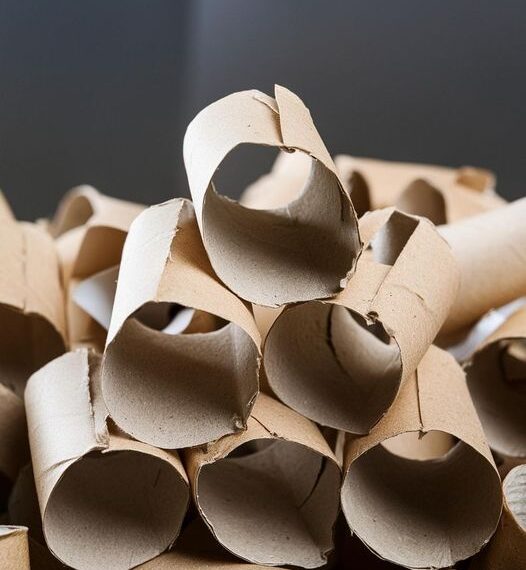3. Supporting Climbing Plants
Climbing plants like beans, peas, and cucumbers need support as they grow. Toilet paper rolls can help guide these plants as they begin to climb.
How to Use:
- Step 1: Place a toilet paper roll around the base of the plant when it’s young.
- Step 2: The roll will provide initial support and encourage the plant to grow straight, making it easier for the plant to find and latch onto larger supports like trellises or stakes as it grows taller.
This method is particularly useful for managing the direction of growth and keeping plants orderly in the garden.
4. Composting
Toilet paper rolls are made from cardboard, which is a great addition to your compost pile. Cardboard provides a good balance of carbon, which helps balance the nitrogen-rich green materials in your compost, such as vegetable scraps and grass clippings.
How to Use:
- Step 1: Tear or cut the rolls into smaller pieces to speed up decomposition.
- Step 2: Add the pieces to your compost bin along with other brown materials like dried leaves or straw.
By composting toilet paper rolls, you can reduce waste and create rich, fertile soil for your garden.
5. Mulching
Cardboard from toilet paper rolls can also be used as a mulch to help retain moisture, suppress weeds, and regulate soil temperature.
How to Use:
- Step 1: Flatten the rolls and cut them into strips.
- Step 2: Lay the strips around the base of your plants or over a bed of soil.
- Step 3: Cover the cardboard with a layer of organic mulch, such as straw or wood chips, to hold it in place and enhance its effectiveness.
This technique not only conserves water but also gradually decomposes, adding organic matter to your soil.
6. Storing Garden Twine
Toilet paper rolls can help keep your garden twine or string neatly stored and tangle-free.
How to Use:
- Step 1: Simply wrap your garden twine around an empty roll.
- Step 2: Secure the end of the twine by tucking it into one of the slits on the roll or using a small piece of tape.
This easy storage hack keeps your gardening tools organized and ready for use whenever you need them.
7. DIY Bird Feeders
TO CONTINUE READING PLEASE SEE NEXT PAGE
